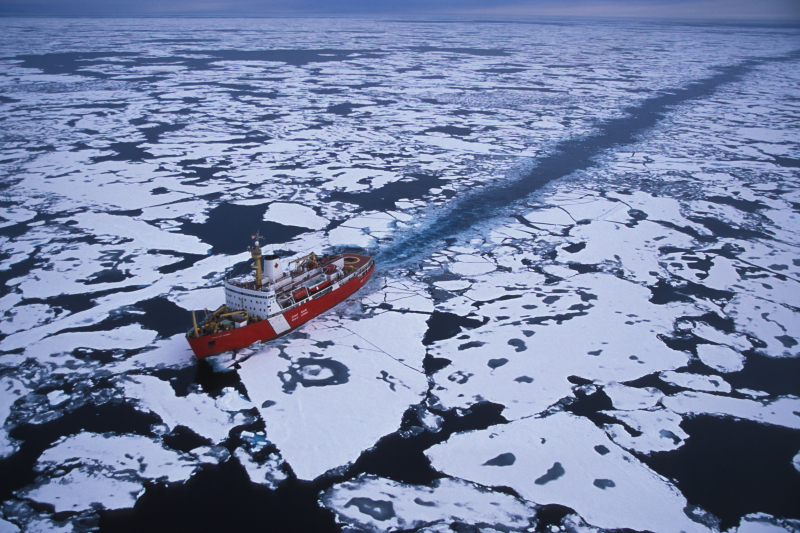
The Canadian icebreaker ship Louis St. Laurent, breaking through the sea ice of the Canada Basin, Beaufort Sea, Alaska, United States. © Paul Nicklen/National Geographic Stock / WWF-Canada
Representatives of Arctic states, Indigenous peoples and observers to the Arctic Council are gathered here in Whitehorse, Yukon to begin the first major meeting under the new Canadian chairmanship.
While Whitehorse is a long way from the Arctic Ocean, the sea will be on people’s minds as they gather here. This will be their first official chance to talk about a major task that the Council has completed, an identification of the most important marine areas in the Arctic.
This identification covers both international sea areas, and also those in national waters. It was driven by a previous Arctic Council report, the Arctic Marine shipping Assessment, that recognized increasing use and development of the Arctic will require some way of protecting the places most important to life there. The Council deserves praise for this achievement – it also requires the ambition to follow it with concrete actions for marine conservation.
So far, the Council has agreed to explore the need for environmental protection for places in international Arctic waters. This is a start, but a much smaller start than is really required to protect Arctic life, and the livelihoods of the peoples who rely on that life. The reality is that only about 15% of what the Council calls Arctic marine areas are “international”, that is, beyond national jurisdiction of any one state.
Now that the Council knows where the important marine areas are, and knows that most of them are in national waters, it needs some way of advancing protection of those nationally-controlled areas. Of course, the protection of those areas is really up to the states concerned, not a job for the Council. What the Council could do is to look at the important areas already identified, and work out which of those areas would, taken together, provide a bottom line of protection for Arctic marine life and ecosystems. This could provide an international plan for prioritizing protection, a plan that could and should then be put into practice by all the Arctic coastal states through appropriate national instruments.
While working at a national level on marine protection, Arctic states and observer states should join their forces to identify international areas where may apply together to the United Nations for special protection status.
